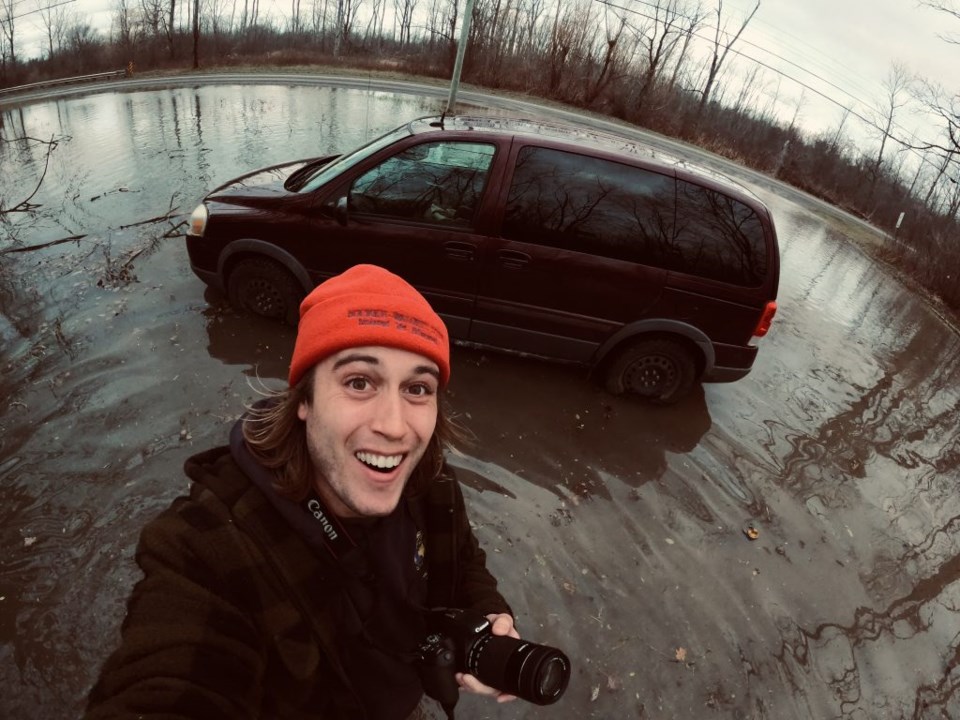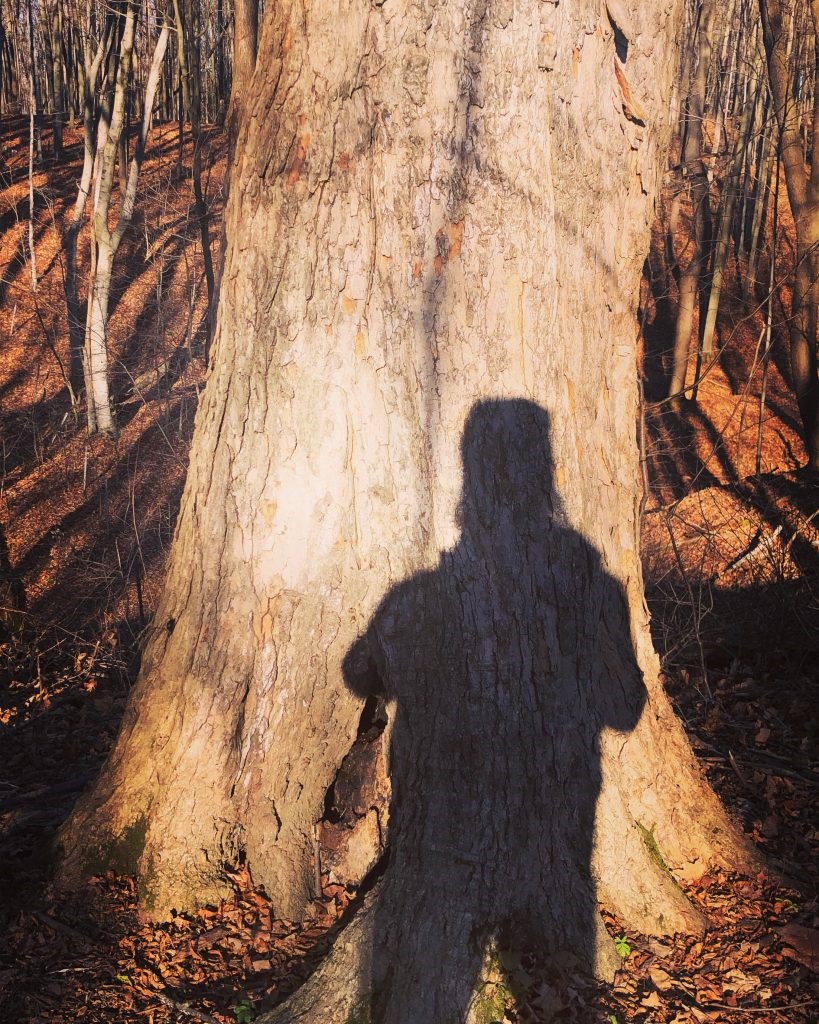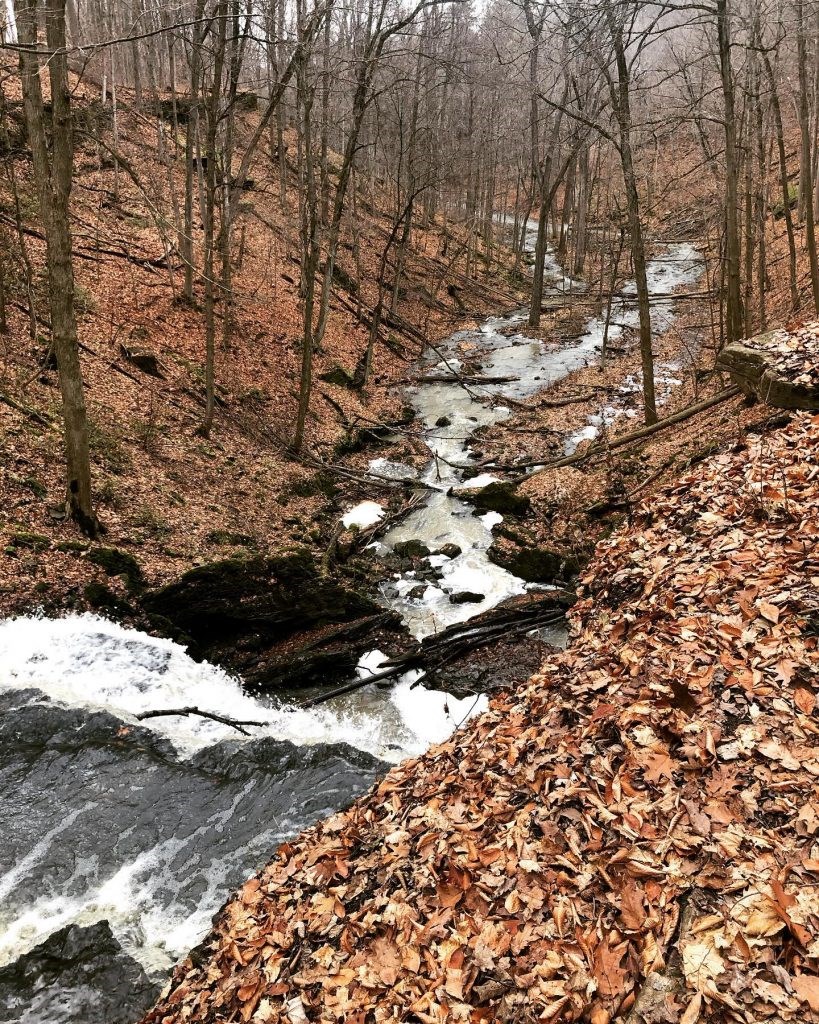
This past weekend’s wind storm was one for the books.
It was forecasted days in advance, as an appreciably massive cold front, stretching from Georgia in the U.S. to Quebec, bulldozed its way eastward across the continent. This violent and unforgettable weather system was created by unusually warm air from the Gulf of Mexico colliding with the crisp, cold air of the Canadian arctic.
Whether we talk about nature or our own human species, while this is imbalance and divide, there is chaos attempting to reach equilibrium.
I set aside the afternoon to drive out to Lake Erie with my camera gear to document what was arguably a once-in-a-lifetime event. A storm surge (storm surges are abnormal rises of water generated by a storm, over and above the predicted tides) of greater than two metres was creeping up, which later notched wind gusts of 117 km/hr in Port Colborne. With a previously saturated ground due to a wet autumn, the perfect storm was quite literally about to take place.
I sipped a cold pint and enjoyed a delicious sandwich at Crystal Beach’s South Coast Cookhouse. I was waiting for the wind to pick up, and wondered if I was going to miss prime wave action before dark.
The lights started flickering, I paid my bill, tipped generously, and started hitting up my predetermined spots with a two-hour window to film.
I started by getting my face and eyeballs sandblasted from Lake Erie at Crystal Beach. I then accessed several dead-end roads with public beach access. At this point, Lake Erie was reaching for the the cottages with her terrifying tempest.
Then, I saw something I have never seen, unless in the tropics. Fort Erie’s Six Mile Creek was flowing in reverse and upstream, as Erie defiantly pushed her way inland. I parked my car in a small gravel parking lot, and could already see how the backward stream had begun flooding all of the associated low-lying areas.
I hiked through a small but ancient patch of old-growth forest towards the lakefront. The hiking trail was flooded to the rims of my boots, and I witnessed the adrenaline-inducing visual and sound of not one, but three trees snapping and falling in the area. As I was always told in hockey, it was time to “keep my head up.”
A beach that was once a full stone’s throw in width had disappeared. I was relaxing there with a buddy of mine just weeks ago. Now, the coppery brown waters of Erie were not just lapping, but pounding the shoreline sand dunes. The beach was gone. Erie’s storm surge made me feel primal and had my brain kicking into high alert mode; I realized I needed to get back to my van, at the rate things were going.
As I retraced my steps back through the old-growth forest, I realized that my water level markers (just a couple of wooden stakes I previously put in the ground) had completely washed away. I then proceeded to walk knee deep in ice cold Lake Erie water, but in a place that it almost never reaches.
When I waded my way out to the parking lot, I was nervous and delighted to find the water levels just inches from my vehicle doors. My van sat in a sea of murky water, and it barely made it out of the parking lot.
At this point, driving down Thunder Bay Road toward the border for more filming, not a single house or business had lights on in downtown Fort Erie.
Selfishly but honestly, I really had to use a washroom, and I couldn’t get into any of the fast food places. The power was out, and while some people drove goofily through intersections, with no power, others gathered to watch Lake Erie breach the break wall and push her chilly
waters onto the Niagara Parkway.
I drove home with wet pants (from the flooding, to be clear) and then sat back in amazement. I thought about old growth trees.
With a storm like that, it is a universal marvel that oaks, maples, and tulip trees between 200 to 250 years old, some older, haven’t yet toppled. The same trees that saw the colonization of Ontario, the War of 1812, and the existence of black bears and wolves, have stood an undeniably profound test of time.
You’ve got to ask yourself how many wind storms, ice storms, droughts, floods, and tornadoes have these trees endured in their lifetime? How are they still standing, converting carbon dioxide into oxygen? Why did the 70 year-old tree topple, but not these 250 year-old magnificent giants?
Here comes one of the ultimate arguments for preserving old-growth forests and champion trees. They are genetic superpowers of the landscape, harbouring the resiliency to withstand multiple severe events over the past two centuries and then some. They still continue to spread their pollen and seeds around the peninsula, sharing genetics with their kin in order to keep populations of certain species robust and healthy.
Naturally, their time will come, too. But until then, why don’t we give such trees greater protections?
Wind storms are the great equalizers of tree society. Sound familiar to the state of the world these days?
It is a powerful show of force that doesn’t discriminate, weeding out the weakened and further testing the strong. New habitats form as new canopies open, and true champions continue to live on.
On an end note to this article, elected officials and the authorities on both sides of the Niagara Peninsula might want to seriously reconsider the indisputable value of shoreline forests and wetlands. All I have seen is increased net losses in both NOTL and Fort Erie alike over the past handful of years.
I just spent the weekend watching these ecosystems in action, live. Soaking up floodwaters. Creating protective barriers to neighbourhoods. And, without asking a question to our often short-sighted society, they are precious habitat corridors for some of our nationally rare species that were here thousands of years before us.

